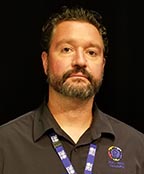Legacy Foundation Scholarship Program
Delegates viewed a video update on the Institute’s Legacy Foundation, including brief profiles of this year’s scholarship laureates.
For more than 20 years, the Institute has been raising money to help kids all across the country. We’ve enabled kids to fulfill their dreams, we’ve funded life-changing resources for child amputees, and, most of all, we’ve funded scholarships for deserving kids.
This year we awarded 35 scholarships worth a total of $55,000.
To date, we’ve awarded $1,105,000 in scholarships to 577 students.
Our scholarships are funded by the generous contributions of individual members, constituent bodies, and by corporate sponsors.
You can help us support a new generation of young professionals and make a difference in their lives.
Founders’ scholarships
$1,500 scholarship sponsored by the Information Technology Group
- Tharun Ganeshram, Ottawa, ON (Vahini Ganeshram, AFS-CS), U of Waterloo
$1,500 scholarship
- Lucie Yang, Edmonton, AB (May Zhou, AFS-LS), U of T
$1,000 scholarships
- Heidi Elder, Ottawa, ON (Amy Elder, SP), U of Ottawa
- Beatrice Mowat, Coquitlam, BC (Suzanne L’Heureux, SP), U of Victoria
Sponsors' Series Scholarships
$5,000 scholarship
- Morgan Shusterman, Ottawa, ON (Allan Shusterman, OSFI-retired), Cape Breton U.
$1,500 scholarships
- Shariq Ahmed, Calgary, AB (Shah Ahmed, NEB), U of Calgary
- Serena Chen, Ottawa, ON (Sharon Deng, IT), U of Western Ontario
- Stephen Dunbar, Longview, AB (Rob Dunbar, AFS), U of Ottawa
- Sophie Feng, Port Moody, BC (Marie Wu, CP), Carnegie Mellon
- Dacian Filipescu, Victoria, BC (Dr. Cosmin Filipescu, RE), Camosun College
- Félix Lafortune, Candiac, QC (Yves Lafortune, RE-retired), Cégep de l'Outaouais
- Cameron MacDonald, Surrey, BC (Robert MacDonald, SP), Dartmouth College
- Brook Motty, Corner Brook, NL (David Motty, IT), Queen's
- Stella Murphy, Halifax, NS (Charles Murphy, IT), Queen's
- Veronika Podobed, Ottawa, ON (Dr. Serguei Podobed, NUREG), U of T
- Anjali Singh, Saint Andrews, NB (Dr. Rabindra Singh, SP), U of New Brunswick
- Austin Wang, Ottawa, ON (Huili Li, IT), U of Western Ontario
- Kelly Wang, Toronto, ON (Xihong Wang, SP), U of Waterloo
- Sherilyn Wen, Ottawa, ON (Mrs. Rui Mao, IT), Queen's
- Debbie Zhao, Ottawa, ON (Yong Guang, IT), U of Western Ontario
Boys and Girls Clubs Scholarships
$1,500 scholarships
- Kayley Baker (Mississauga, ON), U of T, Business
- Stephen Brown (Halifax, NS), Dalhousie University, Engineering
- Alyssa Cook (St. John’s, NL), Memorial University of Newfoundland, B.A.
- Gavin D’Souza (Lethbridge, AB), University of Lethbridge – Sciences
- Samuel Foster (Victoria, BC) University of Victoria, Health Sciences
- Vincent Garneau (Laval, QC), Dawson College, Accounting
- Manal Hamid (Ottawa, ON) Algonquin College, Health Sciences
- Isaac Howe (Fredericton, NB) University of New Brunswick, Sciences
- Patrick Kemp (Toronto, ON), York University, Life Sciences
- Blerta Kurti (Winnipeg, MB) University of Manitoba, Sciences
- Anita Lee (London, ON), University of Western Ontario, Business
- Trevor Poirier (Orleans), Université de Québec en Outaouais, Sciences
- Teresa Talbot (Vancouver, BC) Simon Fraser – Psychology
- Danait Tekle (Orleans, ON) Carleton University, Computer Science
- Justin Thériault (Montréal, QC) University of Calgary, Child Health
Honouring the Stewards of the Year
The “Steward of the Year” award acknowledges those who have gone “above and beyond” their duties to assist members and who have made extraordinary contributions to the Institute.
The 2020 and 2021 Stewards of the Year addressed the AGM delegates on video.
The 2022 stewards addressed the AGM delegates, and President Jenn Carr presented trophies to them. President Carr also presented to the AGM the first ever National Chief Steward: Judith LeBlanc.
National Chief Steward
Regional Directors introduced their 2022 Stewards of the Year.
2022 Stewards of the Year
Atlantic Region: Tony Chubbs (SP)
Québec Region: Karine Régimbald (SH)
National Capital Region: Fred Jamieson (CFIA-S&A)
Prairie/NWT Region: Kevin Jacobs (SP)

B.C./Yukon Region: Phil Johnson (SH)
Celebrating Outstanding Members
President Jenn Carr presented awards to deserving Institute members for their exemplary and inspiring leadership and thanked the members of the Award Selection Panel – Chair Bert Crossman, Ralph Herman, and Nita Saville – for reviewing the nominations and for recommending these laureates.
Don't forget to check out the 2022 Stewards of the Year award recipients.
Institute Service Award
The Institute Service Award recognizes outstanding service over a significant period of time, above and beyond that which might be expected of any devoted member who has served on many constituent body executives.
PIPSC Edmonton Office
Life Membership Award
The Life Membership Award recognizes outstanding service of enduring value to the Institute by a regular or retired member of the Institute who has demonstrated leadership for at least ten years.
President Jenn Carr presented the Life Membership Awards to these outstanding members.
President’s Opening Address
At the 103rd AGM, President Jenn Carr addressed the delegates, touching on the AGM theme “Reconnected” and outlining the goals for the year ahead.
The speech highlighted everything from bargaining to protecting pensions to reaching out to other members and Canadians. We will continue our work to make PIPSC an inclusive, diverse organization. We have a lot of good work ahead of us.
Watch the bilingual video
Full text of the President’s address.
Learn more about the accomplishments and continuous work of Canada’s largest union of professional employees in this year’s annual report.
The report includes a message from President Jennifer Carr addressing some of 2022’s most pressing issues including returning to workplaces, bargaining, fighting wage restraint legislation, and more.
On behalf of its members and staff, the Institute is proud to honour all Canadians who served during the various wars in which our great nation participated.
Wherever you might be November 11, we invite you to pause at the eleventh hour and join with us in a moment of silence as we honour those who fought and those who sacrificed their lives that we might have the freedom we are privileged to enjoy today.
Should you be unable to attend Remembrance Day ceremonies in your area, it is our hope these photos taken at previous ceremonies, will give you a sense of closeness with those who served.
Lest we forget...
In Flanders Fields
by John McCrae

In Flanders fields the poppies blow
Between the crosses, row on row,
That mark our place; and in the sky
The larks, still bravely singing, fly
Scarce heard amid the guns below.
We are the Dead. Short days ago
We lived, felt dawn, saw sunset glow,
Loved and were loved, and now we lie
In Flanders fields.
Take up our quarrel with the foe:
To you from failing hands we throw
The torch; be yours to hold it high.
If ye break faith with us who die
We shall not sleep, though poppies grow
In Flanders fields.

John McCrae
1872-1918
The day before he wrote his famous poem, one of John McCrae's closest friends was killed in the fighting and buried in a makeshift grave with a simple wooden cross. Wild poppies were already beginning to bloom between the crosses marking the many graves. Unable to help his friend or any of the others who had died, McCrae gave them a voice through his poem.
In Flanders Fields was first published in England's Punch magazine in December 1915. Within months, this poem came to symbolize the sacrifices of all who were fighting in the First World War. Today, the poem continues to be a part of Remembrance Day ceremonies in Canada and other countries.









The Institute is saddened to learn of the untimely passing of our friend and colleague, Brandon Wilson.
Brandon passed away on October 23, 2022 at the age of 36. He will be missed.
Brandon became a steward at Agriculture and Agri-Food Canada in 2019.
He was a member of the IT Ottawa West Sub-Group and Ottawa West Branch.
The Institute extends its condolences to Brandon’s family and to the many friends who were privileged to know him.
Visitation will be held at the Kelly Funeral Home, 580 Eagleson Road in Kanata on Wednesday, November 9 from 7 to 9 p.m. and on Thursday, November 10 from 2-4 p.m. and 7-9 p.m.
A funeral service will take place on Friday, November 11 at 10 a.m. at Bethel Pentecostal Church, 500 Viewmount Drive, Nepean.
Condolences and memories can be expressed online.


